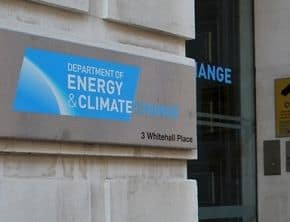Projects such as solar PV on school roofs or panels on libraries, community owned wind turbines and hydro power from local streams could all benefit under the proposed new rules.
The FITs scheme pays householders, businesses and communities for the electricity generated by a range of renewable energy technologies including solar PV, wind, hydro projects and anaerobic digestion. There is also money on offer for excess power exported back to the grid.
Support for community renewable projects over 5MW is currently available under the Renewables Obligation (RO). In response to feedback from community groups on the type of financial incentive that works best for them, DECC is planning to increase the threshold for community projects under FITs to enable larger projects to benefit.
Climate change minister Greg Barker said: “The coalition is determined to drive a step change in the deployment of community energy.
“We want to help consumers, businesses and communities generate more of their own clean, green electricity locally, becoming less reliant on centralised power generation.
“The expansion of our reformed Feed-in Tariff will encourage even more communities to get on board.”
The proposed changes to the FITs rules will be made as part of the Energy Bill process. Once this Bill comes into force, the government will consult on what this will mean in practice for community schemes.
STA chief executive, Paul Barwell, added: “Community solar farms on lower grade agricultural land are a great way to generate electricity locally using the sun as a free source of energy. It helps farmers diversify their risk away from increased weather risks to their land, while at the same time fostering dual purpose land use and biodiversity. Community ownership will help secure better community acceptance for more ambitious solar farms over the existing 5MW threshold.”
